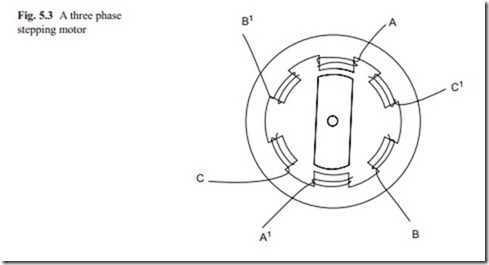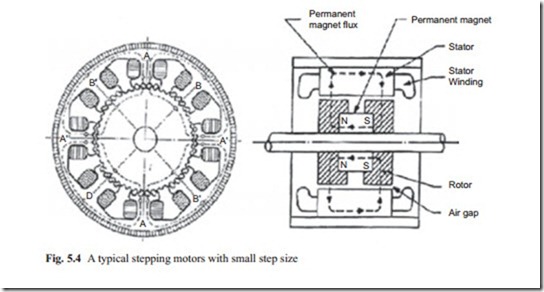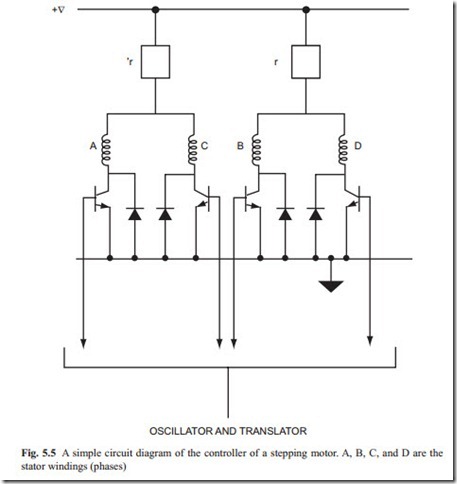Stepping Motors with Small Step Angle
If the rotor and stator of stepping motors are made of laminated steels with many teeth, a very small angle can be achieved. A step angle of 1.8 or 0.9° stepping mo- tors are readily available in the market. The permanent magnet is buried in the rotor. This is shown in Fig. 5.4.
By properly energizing and de-energizing the stator windings, the rotor moves to the required position with the defined phase angle. In addition, if a gear box is attached to the stepping motor, a very high accurate position can be achieved. To move the stepping motor to the required position greater than the step angle, an electronics power unit is usually attached to the motor in which a single pulse represents one step movement of the rotor. This means that correct phases are energized and de-energized. The second input pulse represents another step movement. This requires change of phases energized and de-energized.
A very simple diagram with uses of transistors to switch the power to the correct phases is shown in Fig. 5.5. It can be seen that at least four transistors are needed to perform the correct switching actions. An electronic device will send a current to the required transistors. This makes them connect to a voltage to the required phases as shown by A, B, C, and D.


